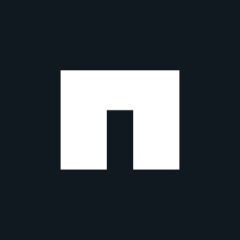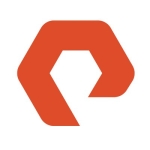What is our primary use case?
Because I'm also a PC guy for my company and in Pakistan there is not a third-person specific guy for a client or specific job, we are also doing the very tough job as the IT specialists. So I have to look after the solution, the technical stuff, and also the deployment. I am personally working in all three departments. I have to, because it's my job as the head of IT in my company. We are a resellers, so we are actually giving solutions to our customers. Regarding SolidFire, it's a very good storage solution when you are looking for a software defined data center.
SolidFire provides seamless performance across your storage system when you need to scale up. Other solutions(software defined data center) do not provide that much of scalability.
If customer doesn't want to learn a lot of software stuff and only wants to learn one piece of software, and does not want to learn the storage system; that's where SolidFire comes in, because its software defined and it is really good for software defined data centers(SDC) and virtualization.
What I mean is, if a customer doesn't need a centralized storage system but does need a data center solution which is capable of being an agile software defined storage system, then they should choose SolidFire; but if they need a big centralized storage SAN, they shouldn't choose SolidFire.
How has it helped my organization?
For a customer who purchased SolidFire, they don't had reported any issue regarding it's performance or scalability.The end result is better productivity due to seamless performance of any application.
What is most valuable?
In terms of SolidFire's most valuable features, simplicity is the key component and key feature of SolidFire. It meant that the administrator or the user do not need to learn about storage RAID Groups or something like that, but they only need to provision the storage space that they need for the host. SolidFire's is being used in NetApp HCI(Hyper-converge Infrastructure)solutions that comes with a Deployment Engine to make the solution more simpler faster and easier to deploy.When you need a software defined storage system SolidFire's is really, really good.
When a customer need complete "Software defined Data-center Solution" with compute and storage; then NetApp HCI is far better choice than any other HCI Solutions.
SolidFire's really simple to deploy. you don't need to learn a lot. When you compare the NetApp storage system with SolidFire, both are very simple to deploy, but comparing to the other products from NetApp, SolidFire is even more simpler to deploy.
What needs improvement?
SolidFire should start from two nodes instead of the four nodes. That's the only thing. In a lot of solutions, we have to use four nodes, that's the better thing. But as a starting point, two is better. That's why their starting point is expensive.
There is another thing - they should have a mixed/Hybrid disk option too; like other solutions have. If you get around the two things, then you can also compete with the cost. The others have mixed/Hybrid disk options. That's why they are cheaper.
What do I think about the stability of the solution?
Collectively; stability is good.
What do I think about the scalability of the solution?
Scalability is really, really good with reference to other storage systems. Other software defined data centers do not have that much storage scalability. SolidFire is very scalable and that's really good.
The starting point of SolidFire is really a little bit on the expensive side, but from a scalability perspective, as a total cost of ownership, if you go for it then it's not so expensive.If you want a scalable solution, of course, the starting point will be expensive.
How are customer service and technical support?
The product is really amazing, so I will not even think about the technical support because it's so easy to manage. There is no problem when you apply the solution according to the requirements and the documentation. You don't need support. In comparison other storage systems like Oracle, and others, have lots of problems and you need support. But with NetApp I only need the support to replace the component and that's easy to do. Also, the fault frequency of NetApp is really low compared to other storage systems.
I didn't experience any kind of problem which took a long time with NetApp support, but I did find a lot of problems which held me with support for other storage solutions like Oracle and EMC. This is very important because the backend engine is very strong. This is really a very smooth experience through the warranty period and of course after the warranty period. I got very good support from NetApp.
How was the initial setup?
Initial setup is very simple as SolidFire build for SDC.
What was our ROI?
What's my experience with pricing, setup cost, and licensing?
One thing I would advise people is regarding the price. This is a very important point here. When you go for being a gold partner, not as a customer, then you should get a better discount. And if you get a better discount from NetApp, then we can compete with any other solution. But here, it is really important to tell the customer what the total cost of ownership is, not just the starting point, because at the starting point, it's still a little bit expensive. But when you have a back-end gold partnership, then you can tell NetApp, "Okay, NetApp I am competing for the cheaper solution." Then you can get extra discounts to sell the product.
But then in parallel, you must inform the customer. If you want a Ferrari, you have to pay for that.You have to tell the customer, "Technically, it is very good." You have to convince your customer that if they want technical ability, agility, simplicity and real ease of management plus a lot of other things, then you have to pay for that. There's no free lunch at all. Somebody has to pay.
What other advice do I have?
We are in a crisis situation for everyone, for customers, for partners, for principals, manufacturers. We need a specific solution to move on to the new normal. So from the available solutions, HCI (Hyper Converged Infrastructure) would be the future of IT. HCI is the future, it is easy faster to deploy collectively. You don't need to buy frequently - just buy once and scale out when you need more resources.
So, I think for the customers want their IT to have a continuous support and response for business needs, then they should choose HCI solutions.
I will advise to choose HCI from NetApp, others can choose HCI from other hardware manufacturers, but the future I believe is HCI.I believe and recommend that the best HCI is the NetApp HCI(The back-end Storage used for NetApp HCI is SolidFire)
The difference between SolidFire and other storage is that it is a stand alone storage. No one has that good storage software or that scalability and performance. On a scale of one to ten, I would rate SolidFire an eight.
The only thing is the initial cost because we have to convince the customer that he has to pay more. That's the only thing in this case. It's not an overall technical, scalability, or simplicity issue. Only the price factor brings it down to eight. Otherwise, if any NetApp partner is a gold partner and they get the good discount then I can easily give SolidFire a 10.
Disclosure: My company has a business relationship with this vendor other than being a customer: Partner






